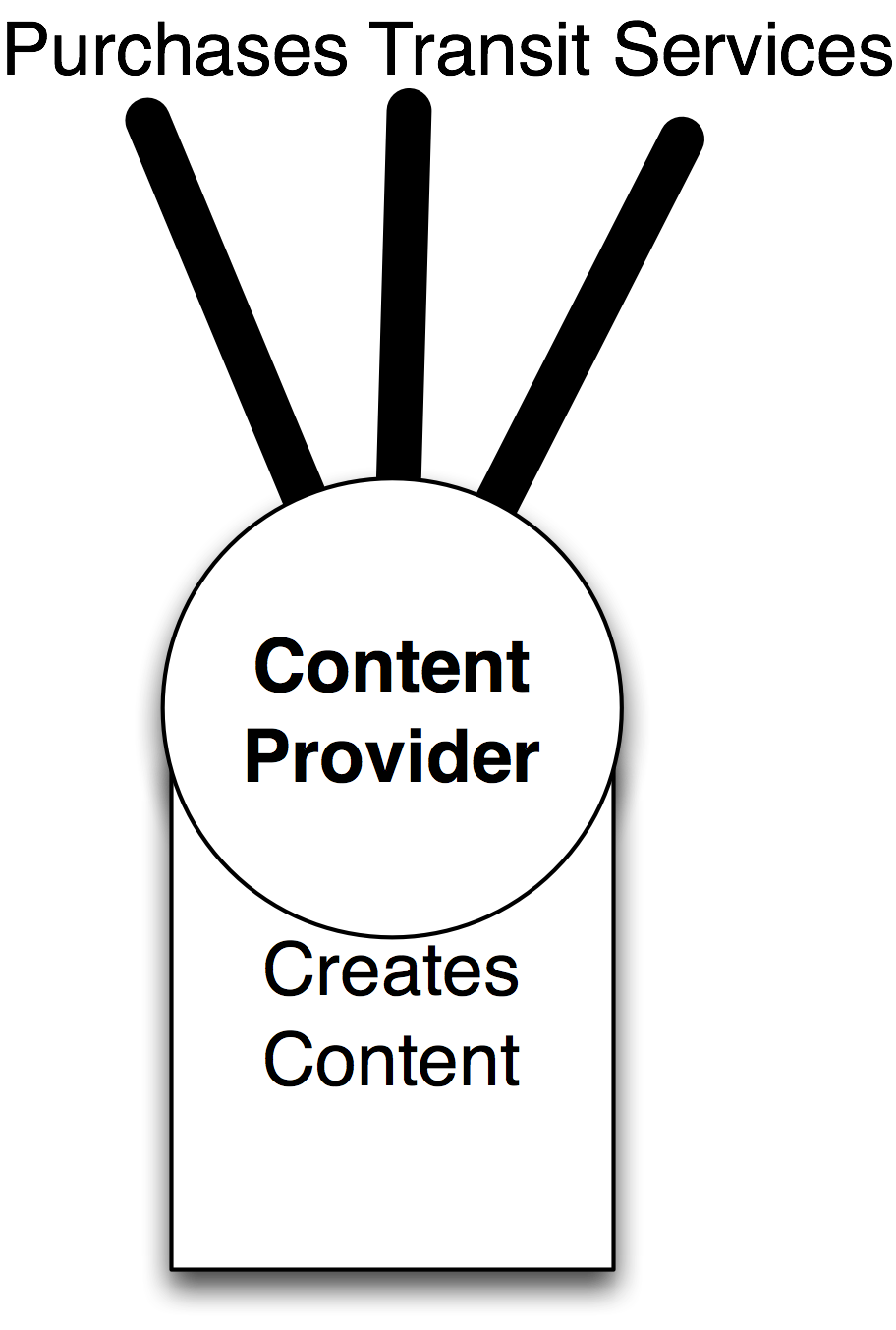The Content Provider
The last species of player that exists in every Internet Peering Ecosystem is the Content Provider.
The basic Content Provider does not peer. A separate type of Content Provider, called a “Large-Scale Network-Savvy Content Provider,” has a strong network engineering team and does peer. We will discuss these peering content providers in the next chapter.
Definition: Content Providers are companies that operate an Internet-based service but do not sell transit within the Internet Peering Ecosystem.
The Content Provider’s core competence is the creation and managing of content and the relationships with those who use, enhance, or support the content. They are generally happy to purchase transit because operating a network is not strategic or core to their mission. These interests are shown graphically in Figure 9‑8.

Figure 9-8. The Content Provider model.
Content Provider model. The Content Provider model shows that this player simply purchases transit from an upstream provider and creates content as its core business.
Content Players include companies like Neopets, Visa, Staples.com, Avon.com, Hertz, Agilent, General Electric, etc.
Relationship of Content Providers with each other. Generally speaking, content providers act as independent players, with their only interplay with the ecosystem being the purchase of Internet Transit. There is little or no reason for them to exchange traffic.
Relationship of Content Providers with the other players. Content Providers generally see ISPs as vendors, and they select vendors along widely varying parameters, but increasingly they are looking at the underlying network and peering infrastructure of ISPs.
Motivation and Behavior of Content Providers
Most Content Providers do not peer – they have a “No Peering” policy. Their focus is on their core competence, and they pay others to handle the rest. Content providers I interviewed uniformly said that the most important thing was the end-user experience, although they also are motivated to reduce their Internet Transit costs, among others.
Now we can construct the most basic form of an Internet Peering Ecosystem.
Notes from the field.
A No-Peering Policy
I visited a content company based in Los Angeles that ran a web site that went viral, and we discussed peering. The CTO said that NTT Verio provided a perfectly good transit service and that there was no strategic need to explore Internet Peering. The company didn’t want to hire network engineers. It didn’t want the added head count, or the additional complexity. It was not the company’s core competence and it was not critical to the delivery of the company’s service. For this content company, Internet Transit was just fine. In effect, it made the strategic choice to have a No-Peering Policy.
Peering Workshop Practice Questions
Here are a few practice questions from the Internet Peering Workshop:
Let’s assume that there is a simple Internet Peering Ecosystem with the players interconnected as shown in Figure 9-10.
Figure 9-10. A simple Internet Peering Ecosystem.
1. What will the answer be when ISP B requests peering with ISP Y?
2. What will the answer be when Content Provider C requests peering with ISP Y?
3. What will the answer be when ISP A requests peering with ISP Y?
Answers to these questions are in the answer key in the back of the book.

